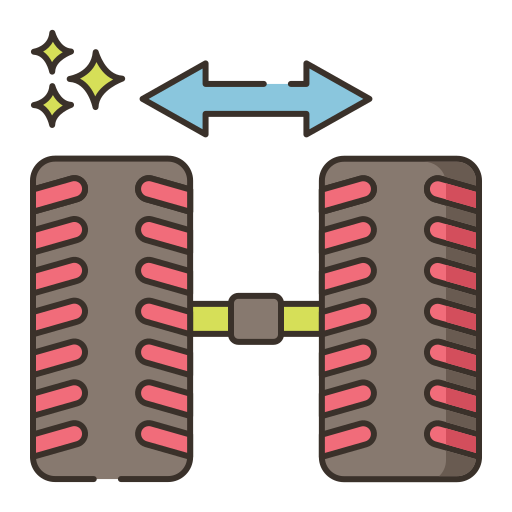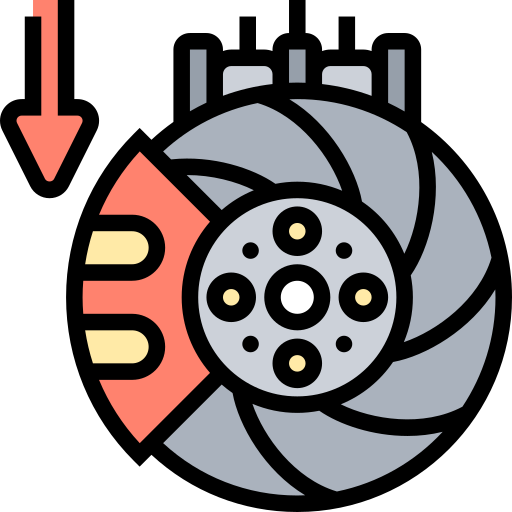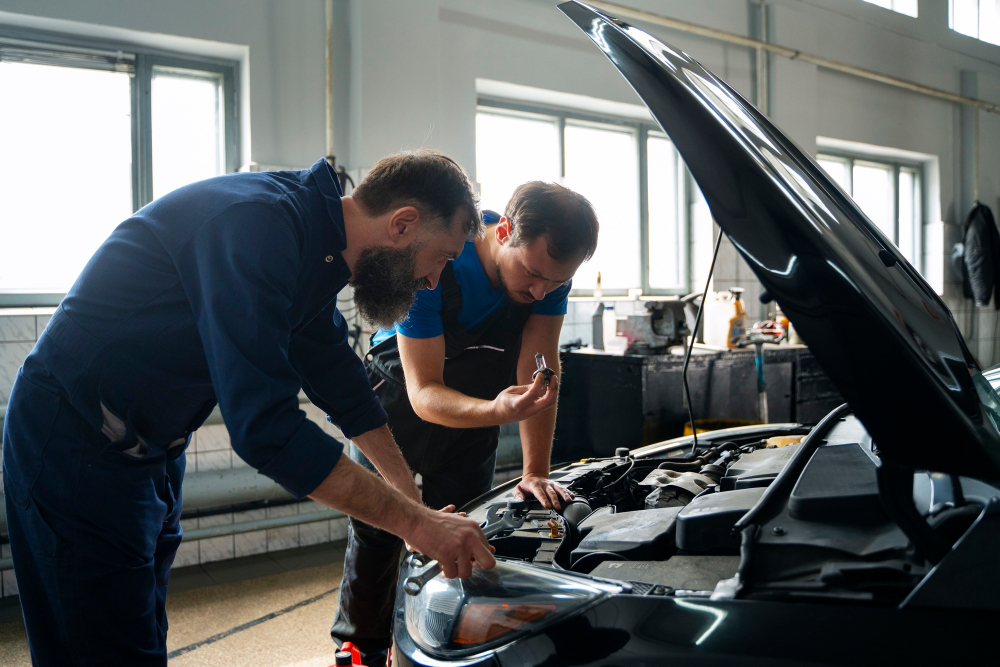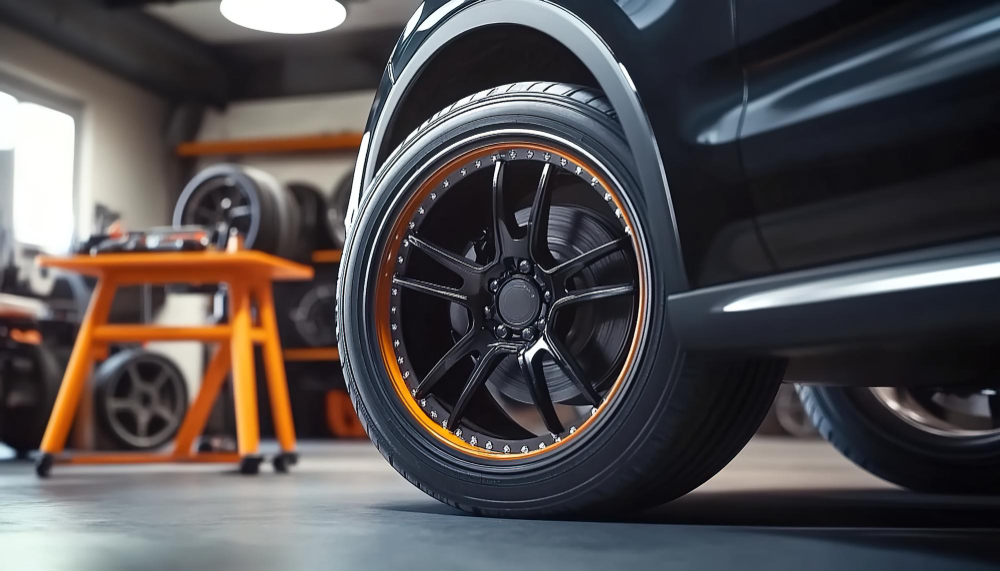
How to Identify and Address Common Tire Issues
Your tires are more than just rubber; they’re the backbone of your vehicle’s performance and safety. From daily commutes to road trips, tires face continuous wear and tear, making it essential to spot and resolve issues before they put you at risk. This blog outlines the most common tire problems, how to identify them, and actionable steps to address them effectively.
Why Is Tire Health Important?
Your vehicle’s tires don’t just get you from A to B. They play a critical role in ensuring proper handling, braking, fuel efficiency, and overall safety. Ignoring tire issues isn’t just inconvenient; it can lead to severe consequences like accidents, increased repair costs, and decreased performance.
Common Tire Issues and How to Spot Them
Before addressing any tire problems, you need to know how to spot the warning signs. Below are the most common tire issues and their telltale indicators:
- Uneven Tire Wear
How to Identify It:
- Check the tire tread. Are some areas worn down more than others?
- Look for signs such as bald spots, excessive wear on the edges, or uneven patterns.
What Causes It:
- Improper wheel alignment
- Unbalanced tires
- Overinflated or underinflated tires
How to Address It:
- Get an alignment at your local service center if you notice irregular patterns on the tread.
- Rotate your tires every 5,000 to 8,000 miles to ensure even wear over time.
- Check tire pressure regularly to avoid over- or under-inflation. Refer to your vehicle’s manual for the recommended PSI (pounds per square inch).
- Low Tire Pressure
How to Identify It:
- A noticeable drop in handling performance or fuel efficiency
- The Tire Pressure Monitoring System (TPMS) light on your dashboard
- Tires that look visibly deflated
What Causes It:
- Punctures or leaks
- Seasonal temperature changes (hot weather can expand tires; cold weather contracts them)
- General wear-and-tear of the tire valve stems
How to Address It:
- Use a tire pressure gauge to check PSI levels and inflate to the manufacturer’s recommended specifications.
- Inspect your tires for punctures, nails, or leaks. Repair or replace punctured tires immediately.
- Keep a portable air pump handy for quick fixes in emergencies.
- Cracks, Bulges, or Bubbles
How to Identify It:
- Visible cracks along the sidewall of the tire.
- Bulges or bubbles that protrude outward from the surface of the tire.
What Causes It:
- Impact damage from potholes or curbs.
- Internal damage due to weakened tire materials over time.
- Exposure to severe weather conditions, like extreme heat or cold.
How to Address It:
- Unfortunately, cracks and bubbles mean it’s time for a replacement. Bulges put you at high risk for sudden blowouts, so don’t ignore them.
- Regularly inspect your sidewalls and avoid curbs, potholes, and rough terrain when possible.
- Tread Wear Below Legal Limit
How to Identify It:
- Use the penny test: Place a penny into your tire tread with Lincoln’s head facing down. If you can see the top of Lincoln’s head, the tread is below the legal limit.
- Tires that visibly appear bald or have worn-down grooves.
What Causes It:
- Lack of rotation or maintenance
- Poor alignment or balancing
- Prolonged use past its lifespan
How to Address It:
- If the tread depth is less than 2/32-inch, replace the tires immediately.
- Consider investing in all-season or high-performance tires that are more durable.
- Stay on top of regular tire rotations and inspections to catch wear early.
- Vibrations While Driving
How to Identify It:
- Your steering wheel shakes or vibrates, especially at higher speeds.
- You might notice a strange noise accompanying the vibration.
What Causes It:
- Tires are unbalanced or misaligned.
- Bent wheels or internal tire damage.
- Problems with suspension components such as shocks or struts.
How to Address It:
- Schedule a professional tire balancing and alignment check.
- Examine your wheels for any visible bends or damage, and replace them if necessary.
- Have a mechanic inspect the suspension system to rule out related issues.
- Tire Punctures or Embedded Objects
How to Identify It:
- A visible nail, screw, or sharp object lodged in the tire tread or sidewall.
- Slow air leakage or sudden flat tires.
What Causes It:
- Driving over sharp objects like nails, glass, or metal debris.
- Poor road conditions in construction zones or off-road areas.
How to Address It:
- If the puncture is minor and in the tread area, use a tire repair kit or visit a professional for patching.
- For larger punctures or sidewall damage, replace the tire immediately. Continuing to drive with damage in these areas is hazardous.
Proactive Tire Maintenance Tips
Caring for your tires goes a long way in preventing common issues. Here’s how to prolong the life of your tires:
- Check Tire Pressure Weekly: Maintaining the proper PSI reduces wear and optimizes fuel economy.
- Inspect Tires Monthly: Look for cracks, cuts, nails, or unusual wear patterns.
- Rotate Tires Regularly: Every 5,000 to 8,000 miles, or with every oil change, rotate your tires.
- Keep an Eye on Load Limits: Overloading your vehicle can damage your tires and reduce their lifespan.
- Store Tires Properly: If you use seasonal tires, store them in a cool, dry area away from sunlight and heat.
When Should You Replace Your Tires?
Even with proper maintenance, tires don’t last forever. Here are key signs it’s time for replacements:
- The tread no longer passes the penny test.
- Visible damage like cracks, bubbles, bulges, or exposed steel belts.
- You’ve driven more than 6 years on the same set of tires.
- Your car starts to feel “off” when driving, even after alignments and rotations.
Always prioritize safety over squeezing extra miles out of old tires.
Stay Safe by Staying Prepared
Your tires are essential not just for your car’s performance but also for your overall safety on the road. Awareness of these common issues, coupled with proactive maintenance, can prevent breakdowns and costly repairs. By investing a little time in tire care now, you can save money, stay safe, and enjoy peace of mind every time you hit the road.
























